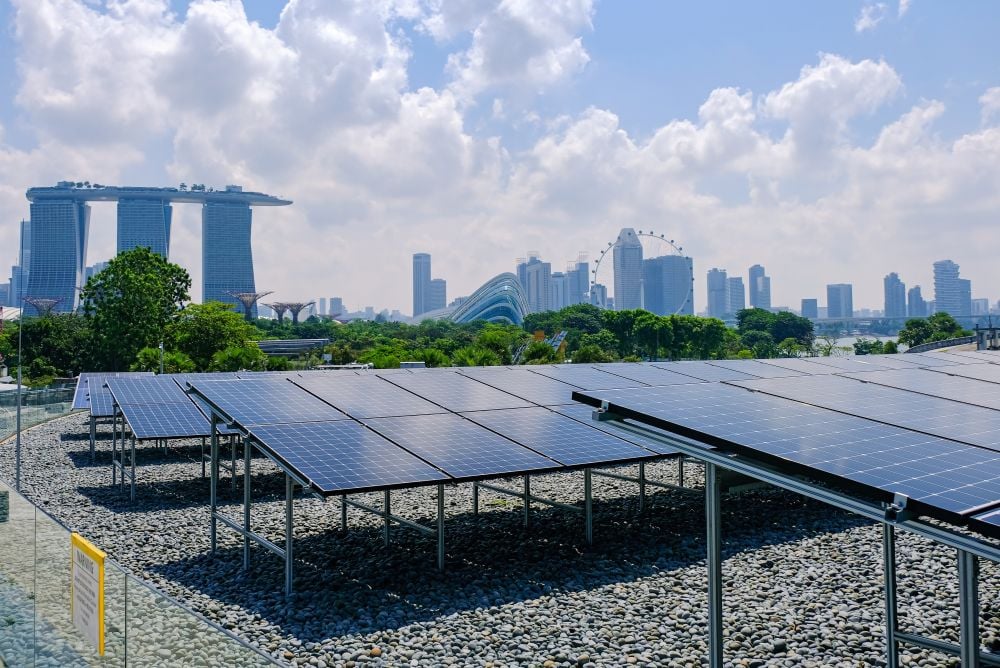Borrowers continue to flock to the loan syndication market as it offers a pool of liquidity amid the difficult market environment.
 |
|
| Lipton: India is a bright spot for international banks |
“The loan syndication market was strong and relatively healthy with a broader base of transactions involving different sectors, tenors and types of deals,” notes Phil Lipton, head of syndicated finance for the Asia-Pacific at HSBC.
“The activity, though, was concentrated in fewer markets such as Hong Kong, India, Singapore and Taiwan. Markets such as Malaysia, Thailand and the Philippines were much quieter.”
Figures released by Thomson Reuters show that the loan volume in the first nine months of the year amounted to US$243.88 billion from 744 deals, representing an increase of 32.7% from US$183.75 billion involving 685 transactions in the same period last year.
Refinancing activity accounted for about 45% of the loan transactions, reaching US$109 billion, maintaining a strong momentum from the US$90 billion tally in the first nine months of 2010. Many of the borrowers have been tapping the market this year to avoid the refinancing cliff in 2012, stemming from a large number of deals completed in 2007 that mature next year.
M&A activity picked up during the period with US$24.70 billion of acquisition-related loans closed during the nine-month period, representing an increase of 67.1% from US$14.78 billion in January-September 2010.
 |
|
| Cracknell: Not every deal is going to do well |
“Deals in the bank market are continuously maturing, especially with loans having tenors of three to five years, which explains the large volume of refinancing transactions, especially in Hong Kong,” remarks Philip Cracknell, head of capital markets and global head of syndications at Standard Chartered Bank. “Some borrowers are even taking advantage of the liquidity in the bond market to refinance their loans.”
The greater volume notwithstanding, the loan syndication market is suffering from a lack of structured deals, whether they are leveraged loans or project financing. “The sluggish leveraged loan market activity is due to the fact that corporates have more cash on their balance sheet than in the past,” says John Corrin, global head of loan syndications at ANZ.
“Clearly, people are cautious in the aftermath of the global financial crisis, building up their cash reserves, keeping their bank borrowing facilities for rainy days. So corporates – be they in the Asia-Pacific, Europe or the US – are in a strong financial position.”
Adding to the market disappointment was the decision of Taiwanese regulators to reject the US$1.6 billion buyout of Yageo Corporation by Orion Investment Company, which offered to acquire 100% of the former. This comes after the loan was successfully syndicated and oversubscribed by 1.3x to almost NT$40 billion (US$1.38 billion), with the lowest interest rate compared with other similar leveraged buyout (LBO) transactions.
 |
|
| Corrin: We do not feel compelled to do every deal |
“The market cannot afford losing a sponsored-driven leveraged deal of that magnitude,” says Corrin. “That was a disappointing outcome after having successfully syndicated the transaction because when opportunities for acquisitions happen, they are more likely to go to trade buyers than private equity buyers.”
Indeed, as Cracknell points out, the demand for LBO in Asia is more for strategic corporate-led acquisitions, while the demand for private equity-led acquisitions is more fickle. “There is liquidity for this type of transactions, but it can be rather choosy,” he notes.
 |
|
| Boey: There is a price gap on buyer and seller expectations |
On the other hand, Boey Yin Chong, managing director for syndicated finance at DBS Bank, attributes the slow LBO activity to the general uncertainty over the global recovery, as well as to concerns of a possible hard landing in China. At the same time, there is a price gap on the buyer and seller expectations.
“These factors, more than the availability of bank liquidity supporting the financing, are contributing to the slowdown,” he argues. “We are currently looking at a few potential transactions, although the amounts are not very large.”
High-yield bonds for LBO deals
Cracknell says the high-yield bond market is going to be increasingly important for LBO deals, such as in the Hyva Global transaction in March this year. Hyva Global – an entity controlled by private equity funds advised by Unitas Capital and NWS Holdings – has acquired 100% of Hyva Holdings BV, a leading provider of transport solutions for the commercial vehicle and environmental service industries, for an enterprise value of Ä525 million (US$750 million).
The acquisition was partly financed by a US$375 million high-yield bond issued by Hyva Global, which replaced a US$350 million five-year term loan acquisition facility that was fully underwritten by Bank of America Merrill Lynch (BoAML), Goldman Sachs, Nomura and Standard Chartered Bank.
The LBO bond financing is a first of its kind in Asia where buyouts are mainly funded by bank loans. Unitas Capital is a dedicated regional private equity firm in Asia with US$4 billion in capital commitments under management as of December 31 2010.
Activity in project finance is a little better, according to Corrin, particularly in South Asia, though the inclination of most of the sponsors is to go for club deals, instead of syndicated transactions. Syndicators do not get paid a lot for arranging club deals.
In India, though, Fitch Ratings warns that funding for the country’s power projects is likely to continue to slow despite the sustained gap between the power demand and supply.
In a report released in late June, it says the impending lending constraints, in the form of regulatory ceilings on individual group lending laid down by the Reserve Bank of India (RBI) and the prudential sector exposure norms, suggest the amount of additional debt that banks can supply to new power projects may be limited. Commercial banks and certain specialized financial institutions have traditionally been the main sources of funding for power projects.
Also contributing to the slower pace of funding is the heightened risk awareness of power projects, underpinned by environmental activism, fuel supply constraints, falling merchant power prices, land acquisition problems and the weakening credit quality of the state electricity boards.
“These sector-specific risks, combined with a rising interest rate regime, tightening bank exposure limits, and the slowing down of equity funding, will further negatively affect the availability of funds to the power sector in the short to medium term,” says Fitch.
Activities in the other sectors, though, are offsetting the slower project finance market in India. “Many Indian companies continue to invest overseas, eyeing among others Australia and focussing on metals and mining,” notes Cracknell. “The Indian banks have a lot of liquidity, although they are mostly interested in Indian-related transactions. They are more comfortable lending to Indian corporates, as they are familiar with the credit.”
In terms of bank deals, one of the standouts from India was the US$460 million loan syndication for the State Bank of India (SBI), which was upsized from the original amount of US$300 million. “The market for Indian banks is not easy with typically small general syndicates of four to five Taiwanese banks with small tickets,” says Cracknell. “SBI broke that mold as 26 banks participated in the transaction with 10 mandated lead arrangers and 16 others joined in various tiers of the syndication. It was a fairly priced deal and that was a pretty good result for a quality name.”
Cracknell adds: “Interestingly, some other Indian banks have struggled to raise large amounts in general syndication and then SBI came and achieved an overwhelming success. This is something that we will see quite a lot – deals that may struggle and yet another transaction comes along and proves to be a blowout. This only indicates that the market is getting more selective on the type of deals that it likes.”
Bright prospects in India
For HSBC’s Lipton, India is a bright spot for international banks. “In the past couple of years, a lot of the borrowers went down the domestic route to raise funds by tapping the rupee loan market, instead of the offshore market because of the attractive pricing onshore,” he says.” But the situation has changed with the rupee loans getting more expensive following the increases in the local interest rates.”
 |
|
| Agarwal: The external commercial borrowing market is quite vibrant |
S K Agarwal, senior vice-president at SBI Capital Markets, notes that interest rates have been moving in the past 18 months and the effective benchmark rate for the banks has risen by between 200bp and 250bp in consonance with the rate increase by RBI.
“The rising interest rate is adversely affecting the Indian loan market as there is a clear slowdown in the incremental credit off-take,” he says. “The Indian loan syndication market is relatively slow this year, compared with 2010, and the trend is more towards balance sheet funding.”
Indeed, there are a lot of offshore borrowings out of India as the rising rupee interest rates are making it attractive for Indian corporates to borrow in US dollars. This comes as Indian companies are continuously looking for acquisition opportunities in Australia, Europe and the US.
“The risk appetite of foreign lenders in India has improved and they are now extending longer tenor loans,” says Agarwal. “The external commercial borrowing market is quite vibrant with a large number of transactions being done at attractive terms.”
ANZ, together with the other banks, has closed a successful deal amounting to US$950 million for Aditya Birla Group, which acquired Columbian Chemicals Company that has businesses in the US, Egypt and Thailand. This is a non-recourse deal to Aditya, which was twice oversubscribed. Other arrangers in the financing are BoAML, HSBC, Royal Bank of Scotland and Standard Chartered Bank.
In other markets, Hong Kong is witnessing a tightening in liquidity, which is partially caused by an overspill from China’s domestic market. “As China tightens its own liquidity, many mainland China companies are raising money through their offshore vehicles in Hong Kong, initiating a big increase in loan volume out of Hong Kong,” notes Lipton.
This increase in loan volume, he points out, is not being met by a similar rate of increase in Hong Kong dollar or US dollar deposits, which is contributing to the tightening of liquidity, which in turn is helping push the pricing up. For the blue chip companies that have strong banking relationships, the increase has been between 10bp and 15bp per annum so far, while for the mid-cap names, it was between 30bp and 50bp or even higher. This increase is set to continue, Lipton predicts.
In May, Hong Kong dollar deposits contracted 0.4% to HK$3.67 trillion, according to figures published by the Hong Kong Monetary Authority on June 30, while total loans and advances rose 2.9% to HK$4.75 trillion, pushing the Hong Kong dollar loan-to-deposit ratio to 82.4% at the end of May from 80.4% a month earlier.
“We are seeing the first real evidence that pricing is going up, even for self-arranged deals,” adds Cracknell. “Unlike in the past, borrowers are not seeking to refinance their loans to obtain lower pricing because it is difficult to achieve a lower funding cost at this point in time.”
He reckons there is a bit of disconnect in the Hong Kong market as the borrowers are trying to raise funds at terms of under 1% over Hibor, while the banks are pricing the deals closer to between 1.25% and 1.50%. “The loan syndication market is fragile in some ways because the banks are selective of the deals they want to support,” he says. “So, not every deal is going to do well.”
There are other factors as well that are driving the pricing, as Lipton points out. “The banks’ funding costs are starting to get hit by the considerations of the Basel III regulations and there is a lot more focus by banks to get an acceptable return from the loans that they are giving out to borrowers.”
Corrin concurs: “With an eye on our funding costs, we are a little bit more selective on which deals make sense for us. We do not feel compelled to do every deal.”
China borrowings
Boey notes the spillover effect of Chinese companies borrowing from Hong Kong, coupled with the increase in Hong Kong dollar cost of funding, has been driving pricing up. He says the tightening regulatory measures by the People’s Bank of China have severely dampened the onshore lending activity in mainland China. These, coupled with the increasing funding cost for US dollar and the need of foreign banks to comply with a 75% loan-to-deposit ratio by year-end, have made the lending business more difficult.
But while the onshore lending has been affected, Boey says DBS has been working with clients to diversify their funding base offshore, whether in US dollar or in offshore renminbi bond markets. An example is the inaugural US$900 million loan facility out of Hong Kong for ZTE Corporation (中興通訊), which was signed in early July after twice being increased in deal size. The facility was initially raised to US$800 million from the initial target of US$500 million during the senior syndication stage and eventually to US$900 million in general syndication.
Another significant China-related deal syndicated out of Hong Kong was the US$5 billion loan for Sinopec, which was likewise upsized from US$3.8 billion, though there were suggestions of tight pricing. “Some bankers may say the price was too tight, but the reality is the market sets the price,” explains Corrin. “The five-year deal was syndicated so the price was a market-clearing price. The loan deal told its own story and it certainly achieved the outcome the borrower was looking for.”
On the China loan syndication market itself, while it is growing, the foreign banks have only a small slice of the market. One of the reasons, according to Wilson Wan, managing director and head of leveraged and structured finance at BOCI Asia, is that the China market is more for long-term lending for infrastructure and project financing type of deals, which are difficult for the foreign banks to digest. There is preciously little general working capital and revolving facility types of transactions.
 |
|
| Wan: Bright prospects for offshore renminbi loans |
In addition, the foreign banks tend to have rather tight loan covenants, while the Chinese banks are willing to accept a sort of clean credit exposure since they understand the credit much better. “The focus of the Chinese banks is more on the credit itself and is putting less reliance on the securities structure and documentation,” says Wan.
“While the Chinese banks have adopted the international practices for loan documentation, it is still a new thing for them.”
And for Wan, what is adding excitement to the loan market are the prospects for the offshore renminbi loan market. “We will see a tremendous increase in the offshore renminbi loan market, just like what we are seeing in the offshore renminbi bond market,” he enthuses. “I will not be surprised if in five to eight years, the offshore renminbi loan market will be at par with the Hong Kong dollar syndicated loan market.”
At present, banks are still short of renminbi deposits, which are equivalent to just about 8% of the Hong Kong dollar deposits. There are no interbank renminbi borrowings available as banks are not lending renminbi to each other.
“We have to wait until the pool of renminbi deposits is more sizeable, to the extent that the banks are ready to lend these deposits out,” says Wan. “By the end of 2011, I expect the renminbi deposits to account for 15% of the Hong Kong dollar deposits and about 20% by the middle of 2012, which could make the offshore renminbi loan market a little bit active.”
Strong loan growth in Singapore
Another market that displayed strong loan growth in the first nine months of 2011 is Singapore, which Thomson-Reuters says Is expecting a record year with US$31 billion so far, compared with US$13 billion a year ago. The activities were led by the commodities and real estate sectors as well as the refinancing of Resort World Sentosa amounting to S$4.2 billion (US$3.5 billion).
For the second-half year, Boey reckons the loan growth will be slightly weaker as most of the commodity companies would have completed their financing. “We will see some event-driven deals and real estate plays to help close the year,” he says. “Overall, we expect a strong year of loan volume, which may exceed the 2008 record of US$32 billion.”
Boey notes that loan pricing in Singapore was under pressure as well at the beginning of the year, and has started to trend upward since the second quarter, arising from uncertainties and volatility caused by the Greek sovereign debt crisis and a general increase in the Asian banks’ cost of funds. “We do, however, still see pockets of pricing pressure in top quality credit names,” he adds.
In Indonesia, the focus in the loan market is in the resource sector and pricing is more attractive than in other markets. “Indonesia is certainly benefiting from the robust economic growth that we have witnessed, even during the global financial crisis,” says Lipton.” There is a higher comfort level among the lenders in Indonesia and this has translated into more deals coming out of this market.”
One deal that caught a lot of attention in this market was the 10-year US$750 million club loan for Adaro Indonesia, a subsidiary of the country’s second largest coal producer Adaro Energy, which attracted total commitments of US$1 billion.
Says a market source: “I do not like that deal. I feel that corporates should not be borrowing for 10 years in the loan market. It is not the function of the loan market to provide the liquidity for that kind of maturity to a sub-investment-grade country credit with a very simple structure. It is the preserve of the bond market. That kind of maturity is for a project finance type of deal, which the Adaro deal is not.”
The source adds: “We love Adaro. It is a great company. It has nothing to do with the borrower, it’s all about the term of the deal.”
But Boey defends the transaction. “Adaro is not the first to tap the 10-year loan market,” he says. “We did the same for Reliance Industries in 2007, Maxis in 2009 and recently one deal was done for Astro Asia. In any case, the deal is structured and is not a pure 10-year bullet, which makes it less similar to a bond.”
The Taiwanese banks, meanwhile, continue to play a crucial role in the loan market since they provide the largest source of liquidity for retail syndication transactions in the region. In some Indian bank deals, for instance, Lipton notes that 90% of the participants can be Taiwanese banks and even bank borrowers from South Korea and Latin America are specifically targeting them when they come to the loan market.”
For Cracknell, though, the retail loan market is still limited. “When you look at several Asian deals, there is a lot of reliance on the Taiwanese banks,” he notes. “It is not healthy to have a retail loan market that is much reliant on just one banking community.”
In March this year, the Export-Import Bank of India closed a US$150 million loan in Taiwan, the first loan ever to be exclusively syndicated for an Indian borrower in this market. The transaction is structured as a three-year bullet senior unsecured loan, which paid an interest rate of 130bp over the three-month or six-month Libor. The deal was oversubscribed with an order book that was more than 1.5× covered.
India loan constraints
 |
|
| Liaw: Taiwanese banks are more selective in supporting transactions |
But the prospects for more similar deals in the future appear constrained. As Matthew Liaw, division head for global structured finance at Chinatrust points out, the country credit limit for many Taiwanese banks to India has reached their limits. “There is little room to extend larger amount of credit to companies in India,” he says. “In future, we will see Taiwanese banks more selective in supporting transactions based on quality of assets, credit and pricing.”
What makes the Taiwan loan market attractive to borrowers, according to Liaw, is pricing and the relatively better liquidity situation.
He warns, though, that in the second half of 2011, there could be a tightening in US dollar liquidity due to limited supply and high demand for loans. “As borrowers are drawing US dollars from the Taiwanese banking system, we see an increase in TAIFX, the US dollar funding cost for Taiwanese banks,” he says. “As a result, the gap between TAIFX and Libor continues to increase.”
In the meantime, the New Taiwan dollar-denominated transactions continued to achieve oversubscriptions. But even as the demand from banks remains high, they are asking the borrowers to accept an all-in (after tax) floor of 1.5% to prevent price-cutting.
Like in other markets, refinancing is a major source of activity in the Taiwan loan market, while loans for capital expenditures and for corporate purposes likewise generate robust volume.
For the other types of deals in the loan market, Cracknell notes the commodity companies are popular and are generating good reception as the banks are comfortable with them at the moment. Casinos, he adds, somewhat surprisingly, are attracting quite a number of lenders as well, no doubt partly due to the relatively high margins paid.
One of the interesting deals in the commodities sector was the US$3.2 billion deal for the Noble Group in July, which was upsized from US$2.25 billion following an oversubscription. A total of 68 banks joined the transaction, including 16 bookrunner-mandated lead arrangers, the most widely participated facility for an Asia-Pacific-based borrower in 2011 so far.
“The transaction comprised of a major syndicate and large amount, manifesting the market interest in commodities’ companies as a sector and the more attractive pricing compared to some of the other more tightly-priced loans for blue chip companies,” says Cracknell.
With Asia offering growth opportunities amid the troubles in Europe and concerns on the US economy, some of the European banks are coming back to participate in the regions’ loan syndication market, explains Cracknell. The same is true with a number of Middle Eastern banks, which participate in either the primary deals or buy loans in the secondary market.
He adds: “For the most part of the year, though, we have had the market backdrop of a possible sovereign default in Europe. If ever that occurs, it will have a major impact on the European banks’ participation in the Asian loan syndication market and in their own market as well. Meanwhile, the Middle Eastern banks are getting rid of their problems of the past two years. And as the issues in the Middle East get addressed, they are coming back, though selectively. We see them, for instance, participating in the Indian loan deals. This is encouraging.”









